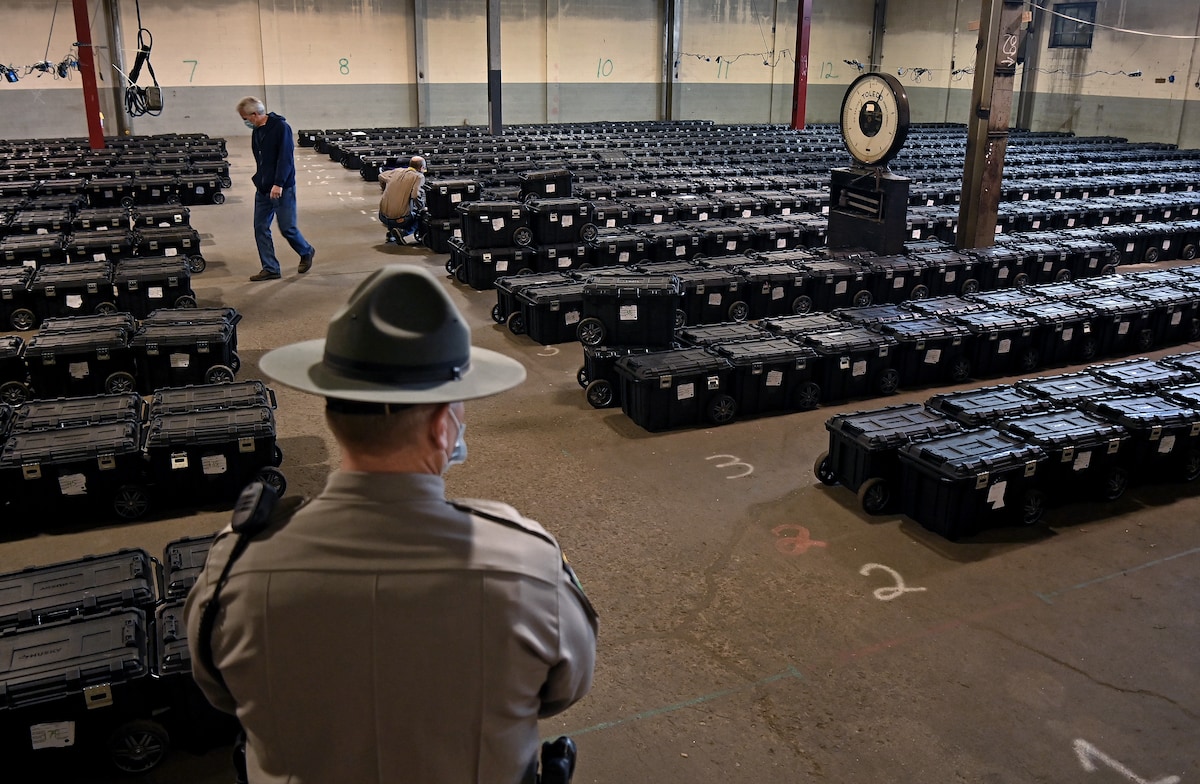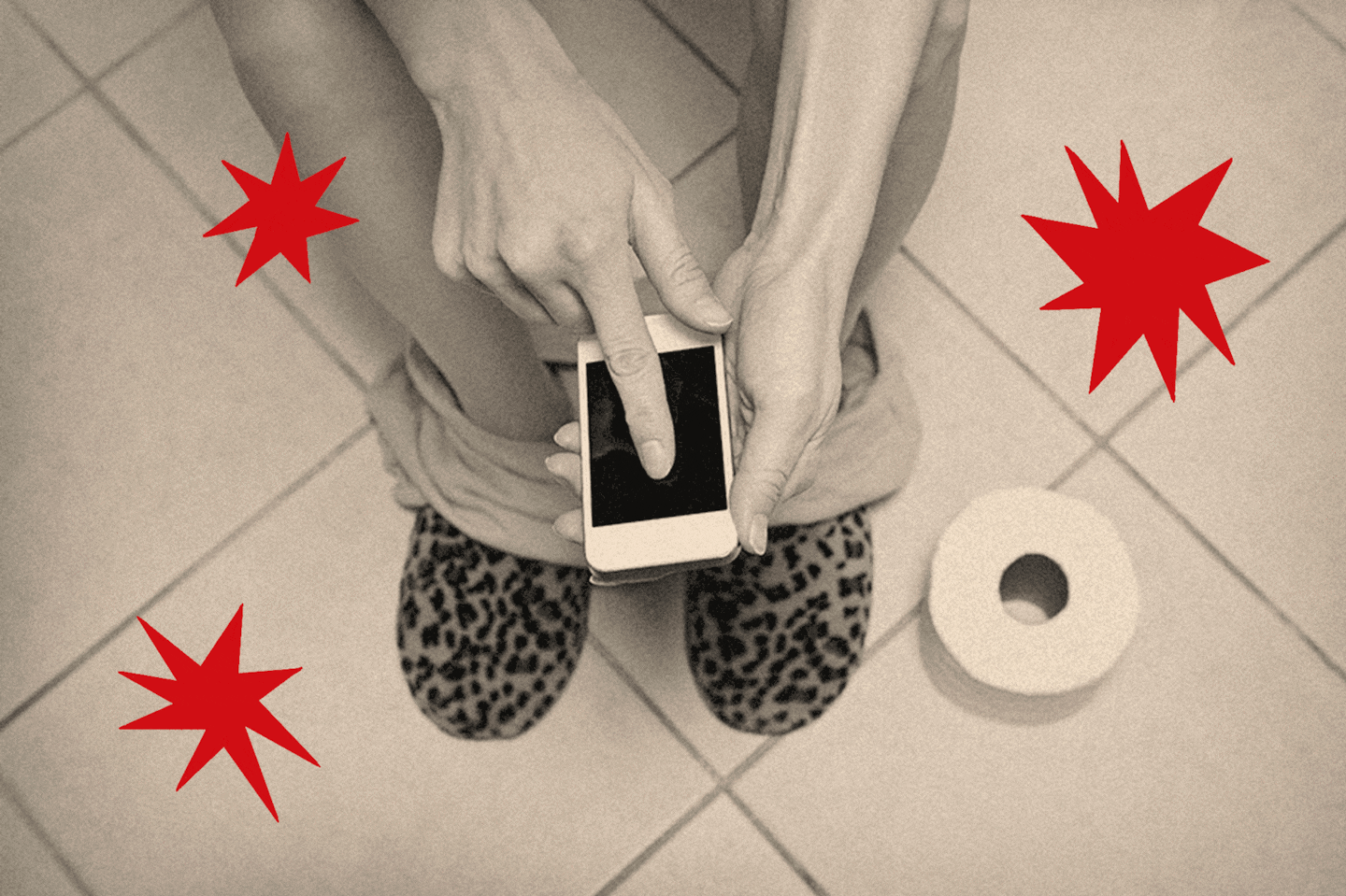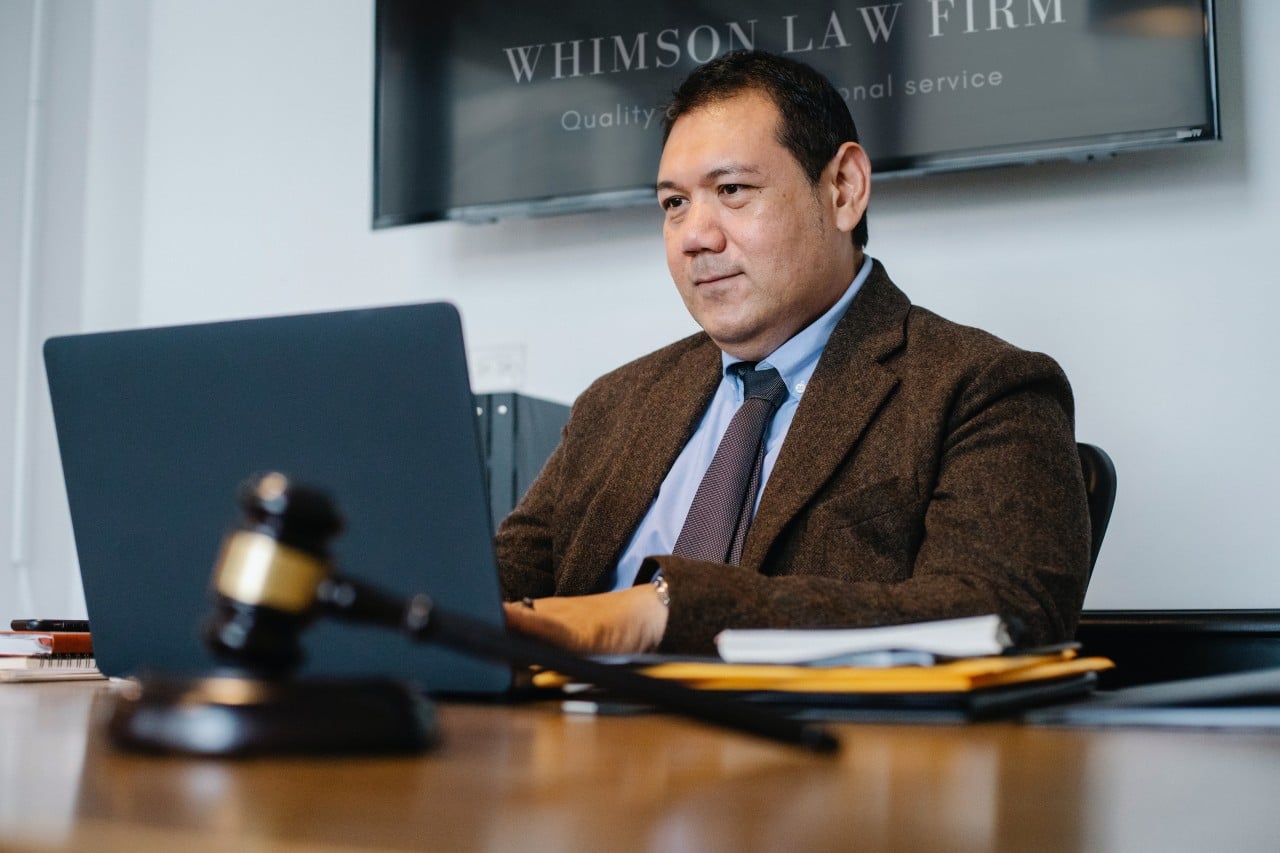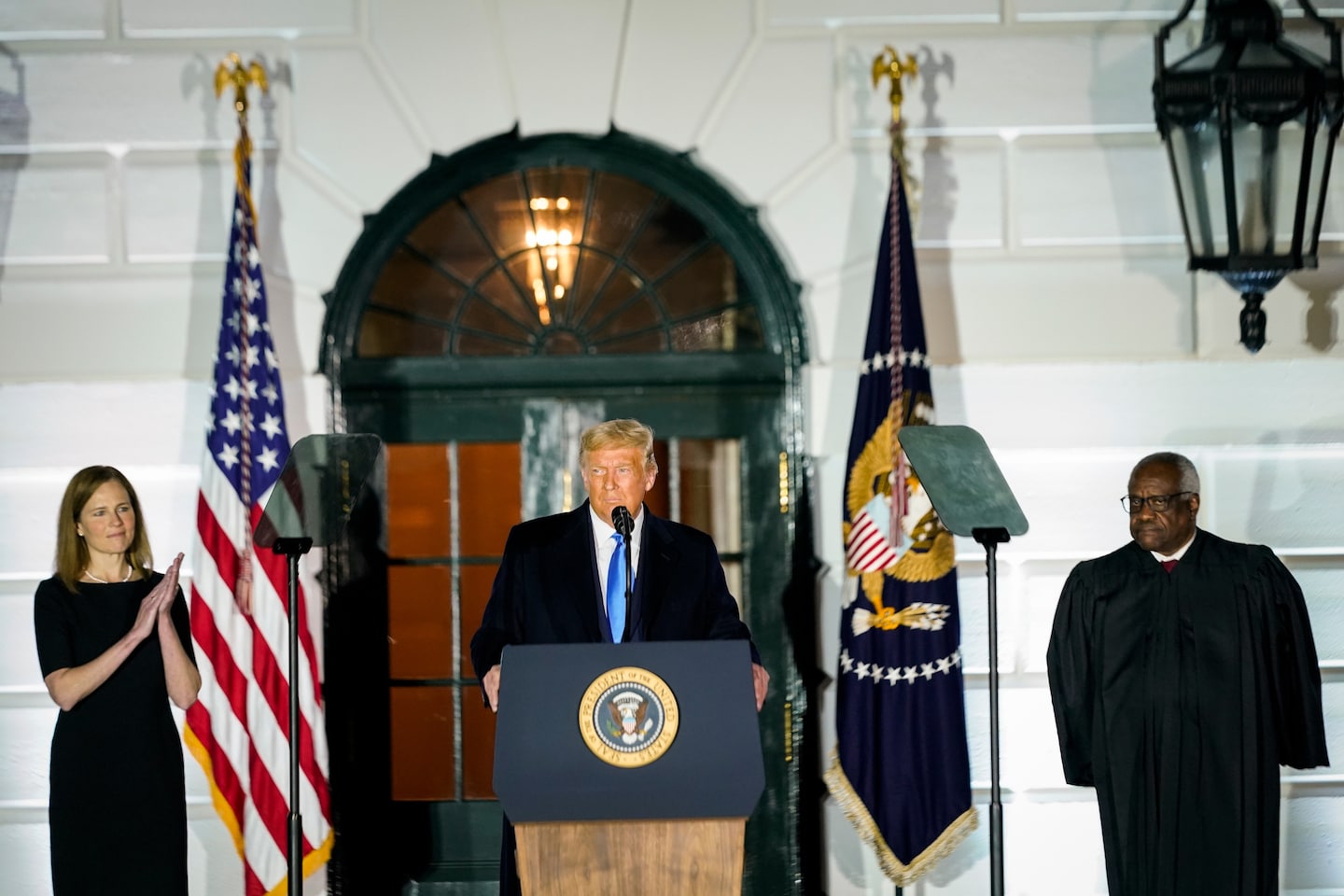
Please note
Joe Biden is the president-elect of the United States, with a wide lead in both the electoral college and in the popular vote. President Trump has refused to concede, uttering baseless allegations of election fraud that have been amplified by allies and conservative media outlets. His campaign and others have gone to court in six states, where Biden’s total margin is more than 312,000, to challenge certain ballots or the certification of the vote. The president’s legal team has yet to produce any evidence in court to support its speculative claims of widespread fraud.
Here are the facts about the president’s efforts to question the fairness and integrity of the election, as well as updates on litigation. In each section, we’ve highlighted quotes so readers can see their significance at a glance.
Was voting software from Dominion compromised?
Trump claim: Trump has spread claims that voting software is “used in states where tens of thousands of votes were stolen from us and given to Biden.” He said in repeated tweets that Dominion Voting Systems is “horrible, inaccurate and anything but secure,” all of which were flagged by Twitter as disputed. He retweeted a baseless report that the voting-machine system had “deleted 2.7 million Trump votes nationwide.”
Reality: There is no evidence that any voting systems were compromised, according to the Cybersecurity and Infrastructure Security Agency, which is part of the Department of Homeland Security. “The systems and processes used by election officials to tabulate votes and certify official results are protected by various safeguards that help ensure the accuracy of election results,” the agency notes on its “Rumor Control” page that refutes disinformation and misinformation about the accuracy of the election results. “These safeguards include measures that help ensure tabulation systems function as intended, protect against malicious software, and enable the identification and correction of any irregularities.”
The president fired the agency’s director on Nov. 17 with a tweet that carried a now-commonplace disclaimer from Twitter: “This claim about election fraud is disputed.” Christopher Krebs led successful efforts to help state and local election offices protect their systems and oversaw efforts to safeguard against foreign and domestic disinformation campaigns. He had countered the president’s unfounded claims of ballot fraud.
Did software misallocate 6,000 votes in Antrim County?
Trump claim, Dec. 2: “In one Michigan county, as an example that used Dominion Systems, they found that nearly 6,000 votes had been wrongly switched. From Trump to Biden.”
Reality: “The software did not cause a misallocation of votes; it was a result of user human error,” reported Michigan’s secretary of state. “Michigan’s elections were conducted fairly, effectively and transparently and are an accurate reflection of the will of Michigan voters.”
Antrim County, which Trump won by 30 points in 2016, initially was awarded to Biden. Election officials questioned those unofficial results and found human, not machine, error. The county clerk failed to update the software used to collect voting-machine totals before sending the results. The mistake caused a discrepancy in vote tallies for a few hours, according to an explanation posted Nov. 6 on the website of Michigan’s secretary of state, and it was corrected.
An Antrim County judge on Dec. 4 ordered ballots preserved on 22 tabulation machines, which Trump attorney Rudolph W. Giuliani tweeted was a “big win for honest elections.” However, the judge was responding not to Trump campaign entreaties, but to a voter who argued that damaged ballots might have caused a village marijuana proposal to win by a single vote, the Detroit Free Press reported.
Biden won Michigan by nearly 155,000 votes. The state certified the election results on Nov. 23 and awarded Biden all 16 electoral votes.
A Michigan lawsuit led by former Trump adviser Sidney Powell that sought to decertify the results was dismissed on Dec. 7 by U.S. District Judge Linda V. Parker, who noted that the plaintiffs had not offered any proof that Dominion machines had flipped votes from Trump to Biden, but rather brought “an amalgamation of theories, conjecture and speculation that such alterations were possible.”
Has the federal government investigated or found any evidence of voting fraud?
Trump claim, on call-in to Fox, Nov. 29: “This is total fraud. And how the FBI and Department of Justice — I don’t know — maybe they’re involved, but how people are getting away with this stuff — it’s unbelievable. … You would think, if you’re in the FBI or Department of Justice, this is — this is the biggest thing you could be looking at. Where are they? I have not seen anything. … It’s an embarrassment to our country.”
Fact: Attorney General William P. Barr said Dec. 1 that FBI agents and U.S. attorneys have been investigating complaints, but “to date, we have not seen fraud on a scale that could have effected a different outcome in the election.”
Before the election, he had repeatedly echoed the president’s warnings about the potential for fraud in mail-in voting, which many states expanded to offer voters a safe alternative during the coronavirus pandemic. After the election, Barr cleared prosecutors to pursue allegations of “vote tabulation irregularities.”
Were there enough voting errors to overturn results in any state?
Trump claim, Dec. 2, in White House video: “So we’re not looking to show you 25 faulty or fraudulent votes, which don’t mean anything because it doesn’t overturn the state. Or 50 or 100, we’re showing you hundreds of thousands, far more than we need. Far more than the margin, far more than the law requires. … The corrupt forces who are registering dead voters and stuffing ballot boxes are the same people who have perpetrated one phony and fraudulent hoax after another.”

Fact: State officials have certified election results in six swing states that Biden won: Arizona, Georgia, Michigan, Nevada, Pennsylvania and Wisconsin. In two states, Georgia and Wisconsin, recounts made no difference in the results.
On Dec. 7, Georgia Secretary of State Brad Raffensperger, a Republican, recertified the state’s results after an audit-triggered hand recount and a formal recount requested by the Trump campaign. Biden’s margin was about 12,000 votes, a decline of a few hundred votes.
“Whether it is the president of the United States or a failed gubernatorial candidate, disinformation regarding election administration should be condemned and rejected,” Raffensperger said, referring both to Trump’s claims and to Stacey Abrams’s 2018 Democratic run for governor. “Integrity matters. Truth matters.”
Were representatives from both parties allowed to observe counting of votes in Pittsburgh and Philadelphia?
Claim: Trump tweeted on Nov. 13 that he won Pennsylvania because “700,000 ballots were not allowed to be viewed in Philadelphia and Pittsburgh.” He and Giuliani, his personal attorney, have continued to make the claim. In a court filing, the Trump campaign contended that “Allegheny and Philadelphia Counties alone received and processed 682,479 mail-in and absentee ballots without review by the political parties and candidates.”
On Dec. 2, in a 46-minute video from the White House, Trump repeated his claim and added: “There is only one possible reason that the corrupt Democrat political machine would oppose transparency during the vote counting. It’s because they know they are hiding illegal activity. It’s very simple. This is an egregious, inexcusable and irreversible harm that stains the entire election. Yet this unprecedented practice of excluding our observers, our vote watchers, as some people call them, occurred in Democrat-run cities, in key states all across the nation.”
Fact: Under Pennsylvania election law, each political party and candidate is entitled to have a representative “in the room” to watch ballots being counted, and state and local officials have said that all parties had access to the count. Allegheny County spokeswoman Amie Downs has said that “at no time were canvassing operations conducted without observers having the opportunity to see the process and the counting.” Braced for conspiracy theories, Philadelphia authorities live-streamed the count online. Pennsylvania Gov. Tom Wolf (D) said on Nov. 4 that “all parties have canvass observers” during the count, which continued for several days. Some 2.4 million people in Pennsylvania voted by mail in the 2020 election, and their ballots could not be opened and counted until Election Day, according to a law enacted by the state’s Republican-controlled legislature.
In its ongoing federal suit against the state and county boards of election, the campaign dropped its claim for legal action based on the assertion that observers were denied access to the count. In a revised suit filed on Nov. 15, the campaign again asked U.S. District Judge Matthew W. Brann to block the certification of Pennsylvania’s election results. But a secondary request to block the certification of all votes where observer access was allegedly restricted was deleted in the amended suit. And the new version stripped out all of the legal counts based on the allegation that ballots were counted in secret.
Trump’s pared-down lawsuit then focused on allegations that Republicans were illegally disadvantaged because some Democratic-leaning counties allowed voters to fix errors on their mail ballots. Counties have said this affected only a small number of votes.
In a ruling on Nov. 21, Brann dismissed the suit, writing that the Trump campaign had used “strained legal arguments without merit and speculative accusations” stitched together “like Frankenstein’s Monster” in a bid to throw out millions of votes. A federal appeals court upheld that ruling on Nov. 27, writing: “Charges require specific allegations and then proof. We have neither here. Voters, not lawyers, choose the President. Ballots, not briefs, decide elections.”
Secretary of the Commonwealth Kathy Boockvar (D) certified Biden’s victory on Nov. 24, after receiving official confirmation of the presidential vote totals from all 67 counties in the state. Wolf then signed a certificate selecting Biden’s slate of electors, which was submitted to the federal government.
Did election officials manipulate signature-verification machinery?
Trump claim: Trump has repeated unfounded claims that election officials in Democratic-leaning Clark County manipulated a machine used to verify signatures to “allow large numbers of ballots to be counted that otherwise would never have passed muster.” In a 46-minute video posted online, Trump claimed that officials had “intentionally lowered” the machine’s standard for matching a ballot signature to signatures on file. “This machine was set at the lowest level, according to one report,” he said. “They said you could sign your name as Santa Claus and it would be accepted.”
Reality: After a nine-hour evidentiary hearing that focused in large part on the signature-verification machine, a Carson City judge found no evidence that the use of the so-called Agilis machine was illegal, error-prone or had led to the counting of fraudulent votes. In fact, he pointed out, Clark County had used the same Agilis machine in the June primary, and Republicans had not complained until the eve of the general election.

Clark County Registrar of Voters Joe Gloria said the manufacturer of the Agilis did not recommend any particular setting; the machine had arrived preset at a default level of 50. Clark County adjusted that level to 40, but even with that adjustment, the machine verified only the most obvious signature matches, about 30 percent of the total. The rest were verified manually by election workers.
The Trump campaign appealed the judge’s ruling to the Nevada Supreme Court, which declined to order any changes to Clark County’s process, finding that the campaign did not have sufficient evidence to back up its allegations. Then other Republicans filed a lawsuit making similar claims in federal court, adding a new claim that the Agilis machine’s failure had disenfranchised one voter, Jill Stokke. Stokke said she went to vote in person, only to learn that county records showed her as already having cast a mail ballot. Her lawyers argued that was the fault of the Agilis machine, which had wrongly verified someone else’s signature as Stokke’s.
But there was no evidence that the Agilis machine was involved at all. In fact, when Stokke complained, officials reviewed her signature manually and found it to be a match. They told her she could vote if she signed an affidavit swearing that the signature on the mail ballot was not hers. She refused.
The federal judge also declined to order changes, finding “little to no evidence that the machine is not doing what it is supposed to do.”
The Trump campaign, in a lawsuit seeking to overturn the election results in Nevada, is still arguing that the Agilis machine is deeply flawed.
On Dec. 4, Judge James T. Russell of the First Judicial District Court in Carson City vetted each claim of fraud and wrongdoing made by the Trump campaign in the state and found that none was supported by convincing proof. The judge dismissed the challenge with prejudice, ruling that the campaign failed to offer any basis for annulling more than 1.3 million votes cast in the state in the presidential race.
The campaign “did not prove under any standard of proof that illegal votes were cast and counted, or legal votes were not counted at all, due to voter fraud, nor in an amount equal to or greater than” Biden’s margin of victory, which was about 33,600 votes, Russell wrote.
The Trump campaign has appealed the decision to the Nevada Supreme Court.

Does video show suitcases stuffed with ballots or standard storage?
Trump claim: The president retweeted his own campaign account’s tweet that “video footage from Georgia shows suitcases filled with ballots pulled from under a table AFTER supervisors told poll workers to leave room and 4 people stayed behind to keep counting votes.” At a rally Dec. 5 in Valdosta, Ga., for Republican Sens. Kelly Loeffler and David Perdue ahead of runoff elections on Jan. 5, he said: “I don’t run to see if people are walking in with suitcases and putting them under a table with a black robe around it. I don’t do that. That’s up to your government here.”
Reality: An affidavit filed by the chief investigator for the Georgia Secretary of State’s Office on Dec. 6 stated that a review of security footage showed no ballots were placed under the table during the day.
Frances Watson wrote: “Investigation and review of the entire security footage revealed that there were no mystery ballots that were brought in from an unknown location and hidden under tables as had been reported by some.”
After interviewing witnesses and viewing the security footage from the arena, Watson “discovered that observers and media were not asked to leave. They simply left on their own when they saw one group of workers, whose job was only to open envelopes and who had completed that task, also leave.”
Boxes that were packed with ballots that had already been opened but not counted were resealed and placed under the table for the next session of counting, Watson said in the affidavit.
Georgia originally certified its election results on Nov. 20. The state has completed its third count of the more than 5 million ballots cast in the state and recertified the results on Dec. 7.
On Nov. 30, a top Raffensperger aide, Gabriel Sterling, said of the disinformation: “They’re insanity. Fever dream. Made up. Internet cabal.”
He called on Trump to stop spreading false claims about fraud, saying in an impassioned speech that the rhetoric was leading to threats of violence against election workers.
On Dec. 6, Sterling said he decided to speak out after receiving a phone call from a project manager at Dominion Voting Systems, the company that has been at the center of the false fraud claims by Trump and his allies.
Sterling said the manager told him “in a very audibly shaken voice” that one of his contractors, “a young tech” in Georgia, had been receiving death threats.
“He took a job a few weeks ago. He’s one of their better ones,” Sterling said on NBC News’s “Meet the Press.” “I was going through the Twitter feed on it, and I saw it basically had the young man’s name — it was a very unique name, so they tracked down his family and started harassing them. And it said, ‘His name, you have committed treason. May God have mercy on your soul,’ with a slowly swinging noose. And at that point, I just said, ‘I’m done.’ ”
Were thousands of ballots mishandled in Maricopa County?
Trump claim: The president has made a slew of false statements about Arizona’s election processes. At a Dec. 6 rally in Georgia for its two U.S. senators, he said: “A sample of 100 ballots reviewed by a judge found that a very small percentage of these ballots — very small, but when you look at it, it was turned out to be very large. It was tens of thousands of votes, more than we would’ve needed to win Arizona.”
In a 46-minute prerecorded video released on Dec. 2, the president said: “In Arizona, in-person voters whose ballots produced error messages from tabulation machines were told to press a button that resulted in their votes not being counted. Also, in Arizona, the attorney general announced that mail-in ballots had been stolen from mailboxes and hidden under a rock.”
A lawsuit filed by Arizona’s Republican Party, the Trump campaign and the Republican National Committee alleged that “up to thousands” of ballots had been mishandled in Maricopa County, the state’s largest, and would “prove determinative.” The suit contended that poll workers pressed or told voters to press a button on a tabulating machine to cast their ballots even after those tabulators flagged an apparent “overvote,” in which the machine believed a voter marked two candidates in the same race.
Fact: Biden won Arizona’s 11 electoral votes by about 10,000 votes. A judge dismissed the lawsuit on Nov. 13, after Trump campaign attorney Kory Langhofer acknowledged that only about 190 ballots had overvotes in the presidential race on the count’s ballots.
On Nov. 19, another state judge dismissed a separate lawsuit, also filed by the Arizona GOP, that sought to have Maricopa County redo a hand count of its audit.
The state’s attorney general said his office investigated the unopened ballots, which were delivered back to the proper voters, and found no wrongdoing.
The county certified its vote on Nov. 20, and Arizona Secretary of State Katie Hobbs, a Democrat, certified the state’s election results on Nov. 30. “This election was conducted with transparency, accuracy and fairness in accordance with Arizona’s laws and election procedures,” said Hobbs, “despite numerous unfounded claims to the contrary.”
The state’s Republican governor, Doug Ducey, also said the election was properly run. “The pandemic and covid-19 brought new unprecedented challenges for our state. But as I said before, we do elections well here in Arizona,” he said. “The system is strong, and that’s why I have bragged on it so much.”
Hours later, Trump lashed out at Ducey for the certification.
Shortly after the certification ceremony, Arizona Republican Party Chairwoman Kelli Ward filed a formal election contest in Maricopa County court. She asked the court to annul the election, claiming misconduct by election officials and widespread errors that had resulted in Biden wrongly being named the winner of the state.
As part of the legal proceedings, Ward’s lawyers were allowed to inspect 1,626 damaged ballots that were “duplicated” — a process by which a bipartisan group of election workers determine the voter’s intent and then fill out a clean, machine-readable ballot. They discovered a total of nine errors that, had they not occurred, would have netted Trump six votes. Applying that error rate to all duplicated ballots countywide would have netted Trump only 103 votes — not the thousands that Trump claimed.
A Maricopa County judge dismissed Ward’s lawsuit, finding no evidence of fraud, misconduct or widespread errors that would justify overturning the election. The Arizona Supreme Court affirmed his decision on Dec. 8, in time to meet the federal “safe harbor” deadline.
The “challenge fails to present any evidence of ‘misconduct,’ ‘illegal votes’ or that the Biden Electors ‘did not in fact receive the highest number of votes for office,’ let alone establish any degree of fraud or a sufficient error rate that would undermine the certainty of the election results,” Chief Justice Robert Brutinel wrote.
Arizona Supreme Court rejects challenge from state Republican party
Was there any evidence of mishandled ballots, voter persuasion or inadequate observation of counting in Wayne County?
Claim: Two GOP poll watchers contended in a lawsuit that some poll workers in heavily Democratic Detroit coached voters to cast ballots for Biden and that some Republican poll observers were not given an adequate opportunity to monitor the vote count, an allegation Trump repeated in remarks on Nov. 5. They also contended that loads of ballots were improperly brought into the city’s convention center in the middle of the night and asked the court to delay certification of the election results.
Fact: Wayne County Circuit Chief Judge Timothy M. Kenny rejected the poll watchers’ suit. “It would be an unprecedented exercise of judicial activism for this court to stop the certification process” that would “undermine faith in the Electoral System,” he wrote in a Nov. 13 ruling.
One of the affidavits submitted by Republican challengers was “rife with speculation and sinister motives.” Another person who submitted an affidavit had posted on Facebook that Democrats had planned to commit fraud, Kenny noted, writing that “his predilection to believe fraud was occurring undermines his credibility as a witness.”
Since Election Day, four lawsuits have been filed challenging the results in Michigan, three of which have focused almost exclusively on Wayne County, Michigan’s most populated county and home to the state’s largest city. Biden won the Democratic-dominated county by 37 points over Trump, or by a margin of nearly 323,000 votes. He won the state’s 16 electoral votes by a margin of nearly 150,000 votes.
Lawyers for Detroit and for the Michigan Democratic Party had argued in court papers that about 100 Republican poll challengers had, in fact, been let into the convention center, but that some were not allowed to return after leaving once the room filled up and exceeded its legal capacity.
“Every one of these attempts is a blatant effort to undermine the voices of a majority of Michigan voters,” Michigan Attorney General Dana Nessel, a Democrat, said after the judge ruled. “No party or politician can steal this election.”
On Nov. 16, Michigan’s Court of Appeals rejected a request to reverse Kenny’s ruling, allowing certification to proceed as required by Nov. 17.
Earlier on Nov. 17, the Wayne County Board of Canvassers failed to certify its ballot count, deadlocking 2 to 2 along party lines. Then, in a dramatic reversal several hours later, they struck a compromise and sent the certified results along to the state board, which is also composed of two Republicans and two Democrats.
After that meeting, Trump called Monica Palmer, one of two Republican members of the board, she told The Washington Post on Nov. 19. She has asked to “rescind” her vote to certify the results.
Trump also invited leaders from Michigan’s Republican-controlled state legislature to meet with him at the White House, where he asked them to block certification of the state’s results. He has personally intervened with Republican leaders in Georgia and Pennsylvania, calling to ask them to reverse his election loss in their states.
What happened with the postal worker’s allegation of ballot tampering in Erie?
Trump claim: The president brought up again a baseless claim that postal workers have tampered with ballots. At his Dec. 5 rally in Georgia, Trump said whistleblowers in multiple states have testified to witnessing postal workers and election workers illegally backdating thousands of ballots, fixing ballots, filling out false birthdays, registering ineligible voters and much more. On Nov. 11 and Nov. 15, Trump tweeted about a Pennsylvania postal worker, Richard Hopkins, who alleged that two days after the election, he heard the Erie postmaster say to a supervisor that they had “messed up” by failing to backdate the postmark on ballots that arrived after Election Day.
Reality: Hopkins admitted to U.S. Postal Service investigators that his story was not true, and he signed an affidavit recanting the claim on Nov. 9, according to three officials who were briefed on the investigation. He later recanted his recantation, and Project Veritas — the organization that initially aired Hopkins’s claims — said he had been coerced by investigators into signing “a watered down statement drafted by them using their words.” But the recorded interview shows that federal agents repeatedly reminded Hopkins that his cooperation was voluntary, and that Hopkins repeatedly expressed regret for signing an earlier affidavit attesting to the claims because it overstated what he witnessed. By then, the Trump campaign had cited Hopkins’s contentions in a lawsuit seeking to delay the certification of election results in Pennsylvania, part of a broad effort to overturn Biden’s win.
Sen. Lindsey O. Graham (R-S.C.) also had cited Hopkins’s story of purported fraud in asking the Justice Department to investigate. Attorney General William P. Barr subsequently authorized federal prosecutors to open probes into credible allegations of voting irregularities. The head of the Justice Department’s Election Crimes Branch stepped down in protest, telling colleagues in an email that Barr’s directive violated a long-standing department policy intended to prevent political interference in election results.
Sixteen assistant U.S. attorneys wrote a letter to Barr saying his authorization “thrusts career prosecutors into partisan politics.” The signers, who are all assigned to monitor malfeasance in the 2020 election, wrote that they observed no evidence of the kind of fraud Barr addressed.
Did video capture a woman stuffing ballots in Philadelphia?
Trump claim: Trump, without evidence, has repeatedly pointed to “bad things happening in Philadelphia.” He raised this in his first debate with Biden, and in the days before the election and in the month since, he has offered various nonspecific versions nearly 100 times. “Philadelphia and various areas around Philadelphia, they cheat, and they cheat like crazy,” he told Fox’s Maria Bartiromo. “The mail-in ballots were — are a disaster. They sent millions and millions and millions of mail-in ballots …”
A video purports to show a woman putting at least three ballots into a ballot drop box on a Philadelphia street corner. Mike Roman, Trump’s campaign director of Election Day operations, circulated the video with a tweet that said: “Literally STUFFING the ballot box in Philly! You are only allowed to deliver YOUR OWN ballot to a drop box!! Trying to STEAL THE ELECTION in broad daylight.”
Reality: There is no evidence that any wrongdoing took place. In an email to The Post’s Fact Checker column, Philadelphia District Attorney’s Office spokeswoman Jane Roh confirmed that her office had reviewed the video on Election Day.
“It is lawful for people to act as agents on behalf of voters who cannot engage in the process of voting for themselves — due to illness, infirmity, etc. It is also lawful to drop mail in a mailbox on behalf of other people,” she said.
“Nothing in that video is conclusive of wrongdoing,” she wrote, adding, “Social media accusations of election interference from the Trump campaign and the Philly GOP circulated since [Election Day], including posts about this video, were never reported to authorities — which arguably raises questions about the actual intent of these posts.”
The Associated Press previously reported that the Trump campaign filmed people in the Philadelphia area depositing ballots. The campaign said it was an attempt to catch violations, while the state’s attorney general suggested it might be illegal intimidation.
Did mail-in voting create an opportunity for widespread fraud?
Trump claim: In a speech Dec. 2, Trump laid out “the corrupt mail-in balloting scheme that Democrats systematically put into place that allowed voting to be altered, especially in swing states, which they had to win.” He repeated claims that he’s made across the election cycle that mail-in ballots were “sent to unknown recipients with virtually no safeguards of any kind [allowing] fraud and abuse to occur on a scale never seen before.”
Reality: There is no evidence that mail-in voting leads to widespread voter fraud. An analysis by The Post found only 372 cases of potential fraud out of approximately 14.6 million ballots cast by mail in 2016 and 2018.
Historically, mail-in voting has not favored either political party. However, Trump’s continual attacks on mail-in ballots did make Republicans wary of absentee voting.
Election security laws vary by state, but numerous safeguards for mail-in voting exist in every state.






